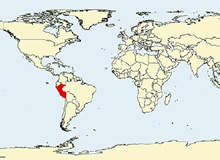
South America’s airport industry is on the rise with a number of international tournaments in the coming years ensuring investment into their expansion like never before. Below we reveal some of the more unusual facts about the airports that call South America home and reveal some details about the work taking place.
South American air: facts and figures
There are about 2,500 airports in Brazil, including landing fields: the second-largest number in the world, after the US.
Teniente General Benjamín Matienzo International Airport in Argentina has an influx of cargo traffic every September to November when it is used to transport fresh fruit to the US.
The busiest airport in Latin America is Colombia’s El Dorado International Airport in Bogotá. Because of Colombia’s central location, it ranks top in the number of flights and weight of goods transported.
In Guyana, situated in South America’s northern districts, there is only one international airport, Cheddi Jagan International Airport, and one regional facility, Ogle Airport.
How well do you really know your competitors?
Access the most comprehensive Company Profiles on the market, powered by GlobalData. Save hours of research. Gain competitive edge.

Thank you!
Your download email will arrive shortly
Not ready to buy yet? Download a free sample
We are confident about the unique quality of our Company Profiles. However, we want you to make the most beneficial decision for your business, so we offer a free sample that you can download by submitting the below form
By GlobalDataLa Florida Airport in the Chilean city of La Serena is the only airport with a runway that runs west to east. Most run north to south because of the shape of the country.
Bolivia’s Jórge Wilstermann International Airport sits 8,360ft (2,548m) above mean sea level and Peru’s Cuzco Alejandro Velazco Astete airport is even higher, located 3,248m above mean sea level.
Shaping the future for South American air travel
Brazil’s Galeão – Antonio Carlos Jobim International Airport will undergo an investment of $268m for an upgrade to be completed in 2011, ahead of the 2014 FIFA World Cup and the 2016 Olympics, both to be held in Brazil.
Jorge Chávez International Airport in Peru announced in August 2009 that it will receive the new ILS CAT III this year because of the severe fog Lima suffers from.
Mariscal Sucre International Airport was built in 1960 to serve Equador’s capital Quito. As it is surrounded by urban developments, in October 2010 it will be replaced by a brand new airport at a cost of $585m.
The new terminal at Carrasco International Airport in Uraguay, which opened in December 2009, was designed by Rafael Viñoly Architects and has undulating curves to mimic the country’s landscape.
Work being carried out at Ministro Pistarini International Airport in the Argentine city of Buenos Aires is being scheduled ahead of the May Revolution bicentennial anniversary, which commemorates the political activities that led to the Argentine War of Independence. Planned improvements include a new passenger terminal, control tower and a fourth runway.



